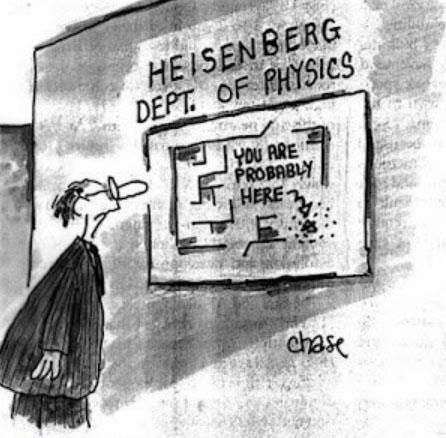To Be Everywhere at Once -- The Path Integral
- particleexperience
- Jul 16, 2019
- 3 min read
Although we needed to change our question from determining an exact path to determining the probability of any given path, it turns out that the new answer – while not the same – is highly related to our old one. Once again, it has everything to do with the Action. But before we get there, we need to discuss one more thing. The nature of probability in Quantum Mechanics.
Since quantum mechanical systems cannot be said to occupy a definite state at any given time, we are forced to concede that the system is in what is called a Quantum Superposition of states. What this means, simply put, is that at any given time a Quantum system is in every possible state it could be in, to varying degrees.
You’ve probably heard about Schrodinger’s cat, “Is it dead? Is it alive?”. The answer, as you might know, is both. The cat, our Quantum Mechanical System in this case, cannot occupy a definite state due to Quantum Uncertainty. Hence, until it is observed it must be in a superposition of all its possible states. Ergo, the cat is alive, and the cat is dead.

Since a Quantum System occupies all possible states, it stands to reason that the probability a Quantum System will move from one state to another state should be some kind of a sum over all of the possible ways such a transition could occur. Going back to our analogy from before, the probability you’d go to your favorite restaurant is something like the sum of different ways your day could result in such a thing, divided by the total number of different things you could possibly do on any given day.
Unfortunately, the probabilities in Quantum Mechanics present one further complication. They don’t add like normal numbers. Without getting into too much complication, to find the total probability from a series of contributions, one must add what are called the probability amplitudes of each contribution in phase, and then square the result to obtain the probability.
To understand why this is the case think of waves of water. We might be interested in the intensity of the water, that is how much energy the wave has. If we have multiple waves, we might think that to get the total intensity we’d just have to add the intensity of each. But waves are, well, wavy. One might be going down while the other one is going up. Clearly, at such a point the waves cancel each other out and the total intensity is zero. All this has to with is the fact that the waves, in addition to having intensity, have a phase. They’re sometimes up and sometimes down.
When you add waves together you need to take account of their intensity and their phase. Adding waves in phase with one another results in something called “constructive interference” wherein the waves reinforce each other by going in the same direction. Waves out of phase, like the once discussed before, result in “destructive interference” wherein the total intensity is less than the sum of the intensities due to the cancellation caused by the interaction between the waves.

As strange as it may sound, probability in Quantum Mechanics is like a wave. Every contributing event has both an intensity and a phase. To get the true total probability you need to add all the probability waves together, considering their intensity and their phase. This is what is meant by “adding up the probability amplitudes.” It means adding up the probability waves.
Having said all this, we can now get to the punchline – and it’s a doozy. It turns out that the phase associated with a given event’s probability amplitude is directly proportionate to the classical action of that event. Hence, to determine the probability that a Quantum Mechanical system moves from point A to point B we need only determine all the different actions which could take the system through this transition and add them up like waves, squaring our final result. This sum of probability waves with phase given by their classical actions is given the complicated sounded name of a Path Integral.

The Path Integral formulation of Quantum Mechanics was in large part the brainchild of the great Theoretical Physicist Richard Feynman. Feynman was deeply fascinated by the Principle of Least action in Classical Mechanics and sought to understand what role the action played in Quantum Mechanics. As we’ve seen, it turns out that in either case, the action provides all the necessary information for answering the operative question, be it “where is the particle going?” in the case of Classical Mechanics or “what is the probability the particle will go there?” in the case of Quantum Mechanics.


Comments